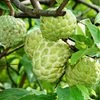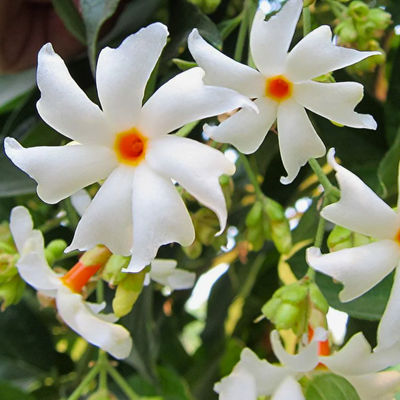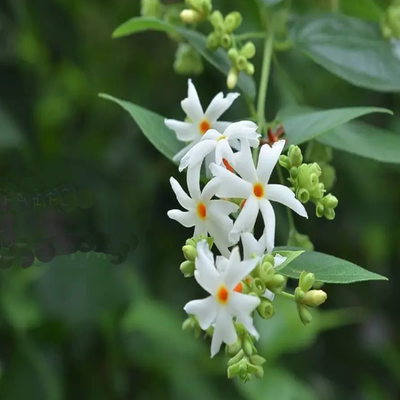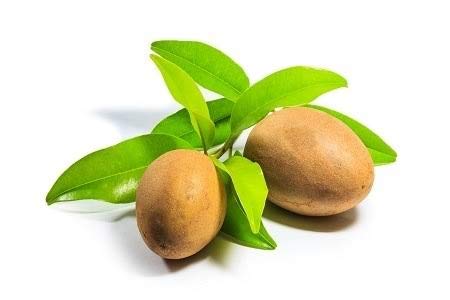
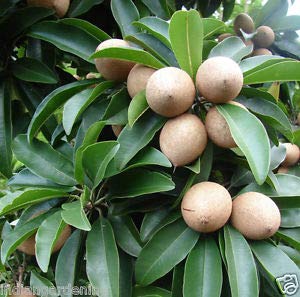
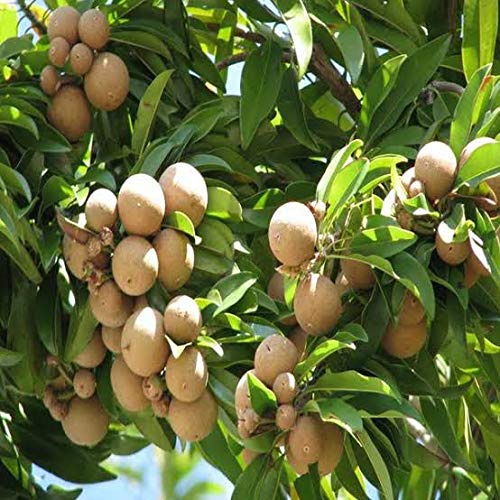
Green Paradise chikoo Live Grafted Plant ( Best Kalipatti oval shaped Chikoo )
Guaranteed Safe Checkout
Kalipatti Chikoo Plant: Nature's Sweet
Secret
The world of horticulture offers a vast tapestry of plants and trees, each with its unique charm and contribution to our lives. One such gem is the Kalipatti Chikoo plant (Manilkara Zapota), a fruit-bearing tree native to India and known for its delectable fruit. In this article, we'll explore the captivating world of Kalipatti Chikoo, from its history and cultivation to the health benefits it offers.
A Historical Delight
- The Kalipatti Chikoo plant has a long and illustrious history in India.
- It's believed to have been cultivated for over 1,300 years, with references to it found in ancient Sanskrit texts.
- This fruit, often called 'sapota' or 'chikoo,' was also highly favored by the Mughal emperors and is documented in their historical records.
A Botanical Marvel
- Kalipatti Chikoo belongs to the Sapotaceae family and is scientifically known as Manilkara Zapota.
- This evergreen tree can reach a height of 10 to 25 meters and is characterized by its dense, glossy foliage.
- The leaves are elliptical and exude a milky latex when cut.
- The tree bears small, fragrant flowers, which then give way to the delightful, brown, or yellowish fruit.
Cultivation
- Cultivating Kalipatti Chikoo is a relatively straightforward process.
- This tree thrives in tropical and subtropical climates, making it ideal for India's diverse geography.
- It prefers well-drained, sandy loam soil and can tolerate both drought and flooding.
- The best time for planting is during the monsoon season, ensuring that the plant receives adequate water for its initial growth.
The Sweet Rewards
- The true charm of the Kalipatti Chikoo tree lies in its fruit.
- The chikoo is a round or oval fruit, with a grainy, brown outer skin and sweet, grainy, and earthy flesh.
- It's often compared to a pear or brown sugar in flavor, with a unique combination of malty sweetness and gritty texture.
- This delicious fruit is often eaten fresh, but it can also be used in various culinary applications, including milkshakes, desserts, and preserves.
Health Benefits
- Apart from its delectable taste, Kalipatti Chikoo offers several health benefits.
- It's a great source of dietary fiber, which aids digestion and helps prevent constipation.
- The fruit is also rich in vitamins and minerals, including vitamin C, vitamin A, potassium, and folate.
- Additionally, it contains antioxidants like tannins and phytochemicals that can help protect the body from oxidative stress.
Cultural Significance
- In India, the Kalipatti Chikoo is more than just a fruit tree; it holds cultural significance.
- The tree and its fruit have found their way into various religious rituals and festivals, symbolizing fertility and prosperity.
- The leaves and fruit are often offered in temples, and the tree itself is seen as a sign of abundance.
Challenges and Conservation
- Despite its numerous qualities, the Kalipatti Chikoo plant faces some challenges.
- Disease and pests can affect the tree and its fruit. Additionally, deforestation and urbanization have led to a reduction in the natural habitat of this species.
- Conservation efforts are crucial to ensure the continued existence and availability of this delightful fruit.
A Sweet Journey: How to Grow Kalipatti Chikoo Plants
If you're a lover of sweet and delicious fruit, the Kalipatti Chikoo, also known as Manilkara Zapota or simply Chikoo, is a tropical delight that should find its way into your garden. With its unique flavor and versatility in cooking and snacking, it's a tree that offers much more than just a pleasant view. In this article, we'll delve into the fascinating world of Kalipatti Chikoo, exploring how to cultivate this charming tropical tree in your garden.
Kalipatti Chikoo, scientifically known as Manilkara Zapota, is a tropical fruit tree native to southern Mexico, Central America, and parts of the Caribbean. This tree is celebrated for its sweet and flavorful fruit, which is commonly referred to as Chikoo, sapodilla, or sapota.
Selecting the Right Location
- Choosing the right location is crucial when growing Kalipatti Chikoo.
- Tropical and subtropical regions are ideal for these trees.
- They require plenty of sunlight, ideally in a location that receives at least six to eight hours of direct sunlight daily.
- It's also essential to ensure that the area is protected from strong winds and frost, as Chikoo trees are sensitive to cold temperatures.
Soil Preparation
- Chikoo trees prefer well-draining soil. A loamy soil enriched with organic matter is ideal for their growth.
- Before planting, ensure the soil pH is slightly acidic to neutral, around 6.0 to 7.0.
- You can perform a soil test to determine the pH and nutrient levels, making any necessary adjustments.
Planting Your Kalipatti Chikoo Tree
Select a Healthy Sapling:
When purchasing a Chikoo sapling, opt for a healthy and disease-free specimen. Look for a plant with vibrant green leaves and a strong central stem.
Dig the Hole:
Dig a hole that's at least twice as wide as the root ball and of the same depth. This allows the roots ample room to spread out.
Plant at the Right Depth:
Place the sapling in the center of the hole, making sure it's at the same depth as it was in its nursery container.
Backfill with Soil:
Fill the hole with the soil you removed while digging, gently pressing the soil down as you go. Water thoroughly to eliminate air pockets.
Mulch and Water:
Apply a layer of organic mulch around the tree, keeping it away from the trunk. Make sure the soil stays consistently moist but not soggy by giving the tree regular waterings.
Pruning and Maintenance
Chikoo trees require minimal pruning. Remove any dead or damaged branches as needed, and trim the tree to maintain its desired shape. Regularly feed your tree with a balanced, slow-release fertilizer.
Patience and Time
Growing Kalipatti Chikoo trees is not a quick endeavor. The tree may not produce fruit for a number of years. However, the wait is well worth it, as the fruit is a delightful reward.
Harvesting Your Chikoo
Chikoo is typically ready for harvest in late winter or early spring. You can tell it's ripe when the fruit is slightly soft to the touch. Simply twist the fruit from the tree or use pruning shears to cut it off, leaving a small stem attached.
Growing Kalipatti Chikoo, the tropical delicacy, is a rewarding endeavor. With the right location, proper soil preparation, and a little patience, you can enjoy the sweet and delicious fruit from your own Chikoo tree. So, why not embark on this fruity journey and savor the flavors of your very own garden?
the Kalipatti Chikoo plant is a true natural treasure. Its rich history, ease of cultivation, delectable fruit, and health benefits make it a plant that deserves more attention and appreciation. Whether enjoyed fresh or in culinary creations, the Kalipatti Chikoo is a sweet secret of nature that continues to enchant us through the ages.

